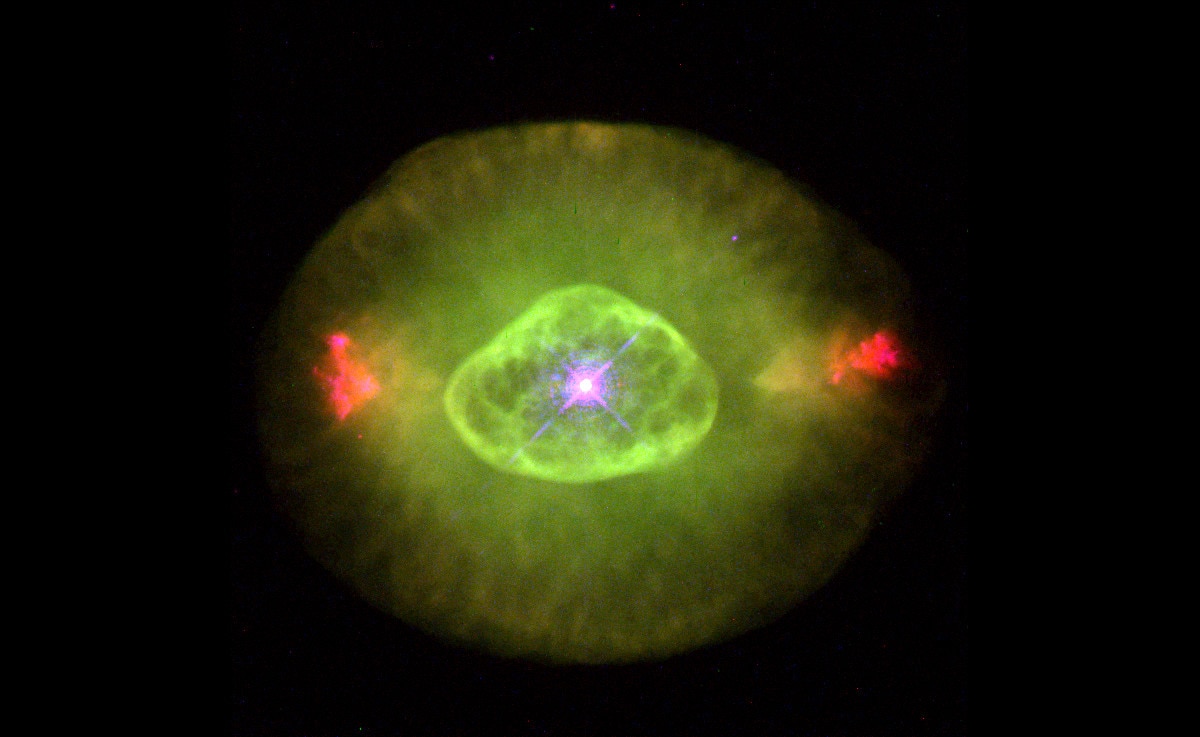Create a free profile to get unlimited access to exclusive videos, sweepstakes, and more!
Good (?) news: The Sun will form a planetary nebula when it dies after all!

I've got some bad news: The Sun will eventually die.
Mitigating that somewhat is the fact that this won't happen for a looooong time, like billions of years. We've got some time to prep for it.
In general, we know what will happen. The Sun shines because it's fusing hydrogen into helium in its core, which releases vast amounts of energy. But the amount of hydrogen in the Sun's core available for fusion is limited. The details are a bit complex (watch Crash Course Astronomy: Low Mass Stars for that info, and/or, (cough cough) I literally wrote the book on this topic… well, one chapter, at least), but in the end the Sun will shed its outer layers, blowing them off in a much fiercer version of the solar wind. The hot dense core will be revealed, a compact white dwarf about the size of the Earth but with half the mass of the Sun.
At this point, though, the science of what the Sun will do is a little hazy. With stars more massive than the Sun, the white dwarf left behind is hot and bright enough to flood the space around it with lots of ultraviolet light (the temperature and luminosity depend in large part on the mass). These high-energy photons hit the gas around it, those old outer layers that were expelled previously. The gas lights up, glowing, and becomes what we call a planetary nebula, a gorgeous neon sign in space.
We also know that stars with much lower mass than the Sun won't leave behind bright enough corpses to do this. But from what we know of the physics of all this, it's been hard to say if the Sun itself will leave behind a white dwarf hot and bright enough to light up a planetary nebula. Models of how stars die indicate that stars like the Sun weren't massive enough to make planetaries, but we're close to the borderline so it's been hard to say.
I've been careful for a long time to note we aren't sure if we'll become a planetary nebula or not, but it looks like now I no longer have to hedge my bet: New research indicates the Sun will indeed form a planetary nebula. It'll be faint, but it'll be there.
The work wasn't focused on the Sun specifically, but on a mystery we've known about for a long time. Elliptical galaxies tend to have almost nothing but old stars in them. Massive stars die first, so in an old elliptical galaxy all that's left are fairly low-mass stars like the Sun — stars we thought couldn't make planetaries. Yet we do see lots of planetary nebulae in these galaxies. Paradox!
And like most contradictory evidence in astronomy, it got resolved by better models. Basically, we know pretty well how stars behave as they age, and what factors that behavior depends on (mass, mostly, but also what mix of elements are in them, and things like that). The equations governing all this — what we call stellar evolution models — have recently been improved. The new research used these models to look at how hot and how bright the white dwarfs are that are left over from stars of different masses when they die.
What they found is that the initial mass of the star could be smaller than older models used and still get a planetary nebula. That includes the Sun! It's near the lower limit, but it still counts.
As it happens, some elements in the gas in a planetary glow better than others. The two best are hydrogen (which is partly due to it being the most abundant element in the gas) which glows red, and oxygen which glows a ghostly green. It just has to do with atomic physics and the way the elements react to UV light. When the Sun dies, and the gas expands away, the scientists predict hydrogen will begin to glow first, just 5,000 years after the white dwarf starts to be exposed, and oxygen will then join in the fun about 7,500 years after that.
Won't we be pretty then! Even if faint.
But not for long. The white dwarf that used to be our star eventually cools and won't hot or bright enough any more, but more important than that the gas gets ever more tenuous as it expands. Very roughly 10,000 years after forming a planetary nebula the gas expelled from the Sun as it died gets so thin that the light from the white dwarf tends to pass right through it. The nebula fades, becomes dark, and eventually mixes with the gas between the stars.
And what of Earth? Well, that's still not clear. When the Sun expands into a red giant Mercury and Venus are gone, consumed by the swelling star. They'll be vaporized. The Earth is far enough out that it may escape the same fate (it helps that, as the Sun blows off its outer layers, its mass decreases, so its gravity loosens its hold, meaning the Earth's orbit will expand).
So yay, we won't get et, but, well, it's not like we'll get through this unscathed. A gigantic red giant filling half the sky means the Earth will not fair well during this time. The surface temperature will be high enough to melt rock, the oceans will have long since boiled away, and hopefully humanity will have found some other clement spot in which to live.
After all, we're talking six billion years or more from now. Plenty of time to figure out a new home to move to. And in the meantime, we're learning more about our nearest star all the time. Given what the future holds for us, I think that's a pretty good thing.



























